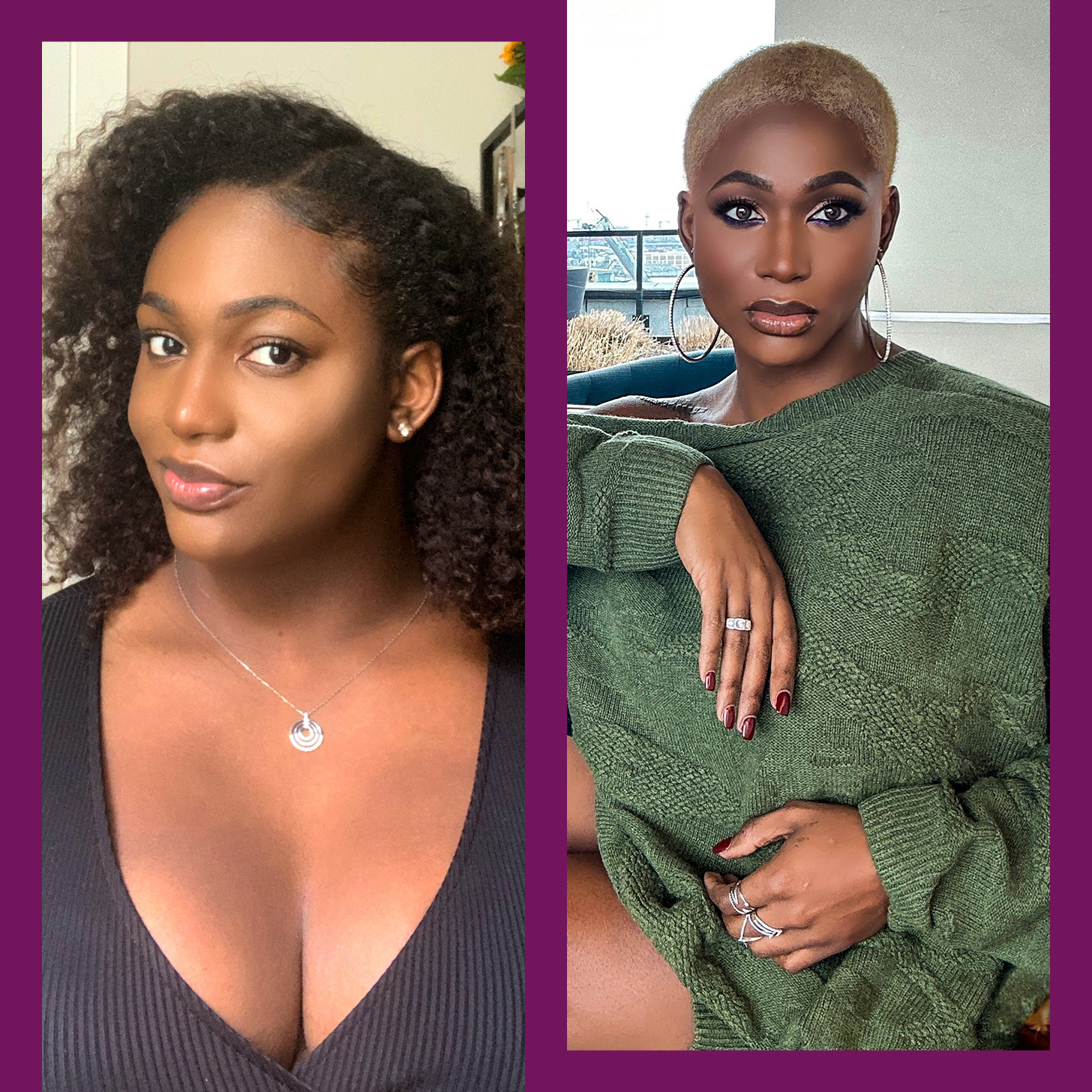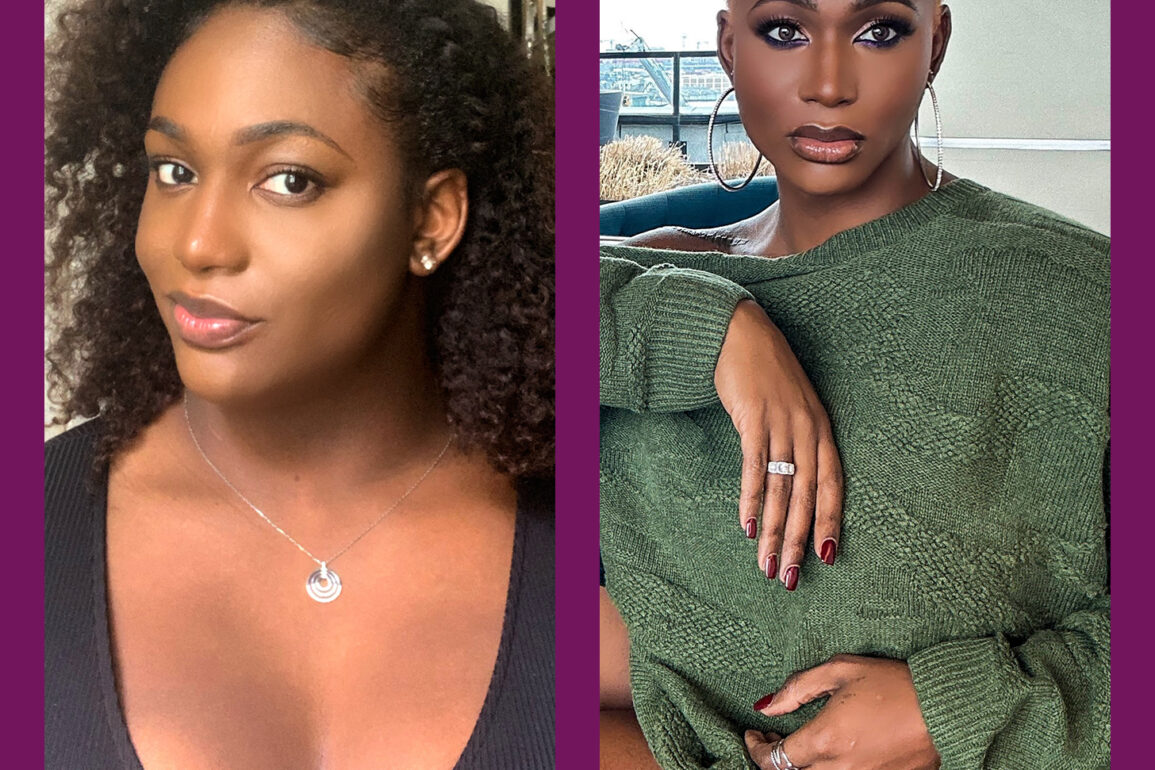
Hope Giselle-Godsey, a Black transgender community organizer and motivational speaker, was on Facebook Live in 2016 with an audience of 120 people when she decided to take a pair of clippers to her hair as an experiment. But she made a false move and ended up taking off more hair than intended. Rather than let her audience see her cry on camera, she decided to make it seem intentional and used it as an opportunity to embrace a shorter hairstyle.
“I wasn’t about to break down in front of my Facebook Live audience, and I didn’t want to seem traumatized over hair,” Giselle-Godsey says. “I remember I decided to walk outside without wearing a wig at one point afterward because I moved to Los Angeles and it was just too hot for wigs. Two people stopped me to tell me how beautiful I looked. It made me feel validated and comfortable having shorter hair.”
For Black women, hair is always a journey – from experimenting with different styles to dealing with stereotypes of Black hair. And for Black transgender women, hair takes on a whole new meaning, because their hair is intimately tied up in politics of race, womanhood, and trans identity. Everyone living in America is held to Eurocentric standards of beauty in some form or another, and Black trans women deal with those standards acutely; their hair not only comes under scrutiny for those existing beauty standards, but also for what qualifies as standards for womanhood.
“I pushed against society’s standards and finally let myself be the woman I wanted to be.”
Early on during college, for example, Giselle-Godsey thought her hair had to be long. “There’s this social stigma that Black women don’t grow long hair,” she says. “As a Black trans woman, you get pulled into these tropes early on in your transition.”
Dealing with these pressures impacted Giselle-Godsey’s own journey, as it has shaped many trans women’s relationships with their hair. “We have to prove we can grow hair, and we have to prove we can make our hair straight,” she says. “Finally, I ended up getting my locs, which are now over 26 inches. It’s the only hairstyle I could have for more than two weeks that wouldn’t annoy me. I love the place my hair is at now, and I feel so versatile with it.”
Although hair care might seem like another everyday act for many, for Black trans women, hair is literally at the root of their race and gender identity. And when they’re early on in their transitions and journeys, this can be a source of complication and conflict. Zuri Hooks, a Black trans woman from Montgomery, AL, began her natural hair journey this past January.
Hooks didn’t feel like her hairline was in the best place when she was in her late teens, but now in her early 20s, she’s decided to learn to tend to her hair and use it to help claim her trans identity and embrace her femininity. This year, she stopped wearing wigs, which she says has been very empowering.
“I finally felt like I didn’t have to be hyper-feminine and mask myself within society,” Hooks says. “I pushed against society’s standards and finally let myself be the woman I wanted to be. People have all these horrible stereotypes about transitioning, and I still remember getting all these comments early on in my hair journey about how I had a male hairline, but I’ve learned to embrace the real me.”
Related: The Sacred Power of Getting Birthing Braids as a Black Mom
When Hooks began this journey, one of her biggest inspirations was actress Yasmin Finney, whom she saw in the hit Netflix series “Heartstopper.” Hooks was inspired by Finney’s various looks with her natural hair, which led her to get on TikTok and start looking at videos that detailed how to play with different natural hairstyles. Since then, she’s donned hairstyles ranging from mohawks to braids.
“I’m still waiting for the front of my hair to grow longer, but I’m at a point where I feel cute,” Hooks says. “It comforts me when my hair is in place.”
Gabrielle Inès Souza, executive director of the trans mutual aid project The Okra Project, says when she first began her transition, one of the most liberating things for her was exploring longer hairstyles.
“Growing up in a family where long hair was celebrated, I always admired how the women in my family styled and cared for their locks,” Souza says. “Experimenting with longer hairstyles made me feel more connected to my family and the generations of women who came before me. Society often imposes narrow standards of beauty and femininity, so playing around with longer hairstyles became an act of defiance and self-love. It was a declaration that my identity as a Black trans woman was valid.”
“It was a declaration that my identity as a Black trans woman was valid.”
When it comes to hair maintenance, Souza has opted to try out different salons, which can be challenging for Black trans women trying to find somewhere accepting of queer folks. Many tend to either do their hair themselves or have hairstylists and braiders come to their homes directly for individual sessions.
“The fear of discrimination and if we’ll be welcomed in those spaces looms large, casting a shadow over what should be a simple act of self-care,” Souza says. “I’ve been fortunate enough to have had positive experiences in my search for the right salon or stylist. I make sure to ask important questions before I go to a new salon. Do they know about diverse hair types and styles? Do they create a welcoming and inclusive environment for everyone? These questions help me gauge whether a salon or stylist is a safe space for me to express myself authentically.”
She adds, “In my journey, I’ve learned to trust my intuition and prioritize my well-being above all else. It’s about finding a salon or stylist who not only meets my hair care needs but also recognizes and celebrates the beauty and resilience of my identity.”
After years of navigating her own hair journey, Souza describes herself as a chameleon. She’s embraced a sense of freedom and openness and has dyed her hair various colors, and has switched her hair up over the years in styles ranging from ponytails to pixie cuts.
“As I continue on my hair journey, I am excited by the endless possibilities,” Souza says. “I am open to trying new styles, new colors, new techniques, knowing that each one brings me closer to a deeper understanding of myself and a greater appreciation for the women who have shaped me into the person I am today. Through it all, I remain anchored by a sense of gratitude for the women who came before me, whose legacy lives on in every strand of my hair.”
Kristopher Fraser is a New York-based editor and stylist. His work as a writer and journalist covers fashion, beauty, entertainment, and culture and often addresses issues of diversity and representation. In addition to PS, Kristopher’s work has appeared in WWD, Footwear News, The Daily Beast, Robb Report, and VMan.
This post was originally published on this site be sure to check out more of their content.





